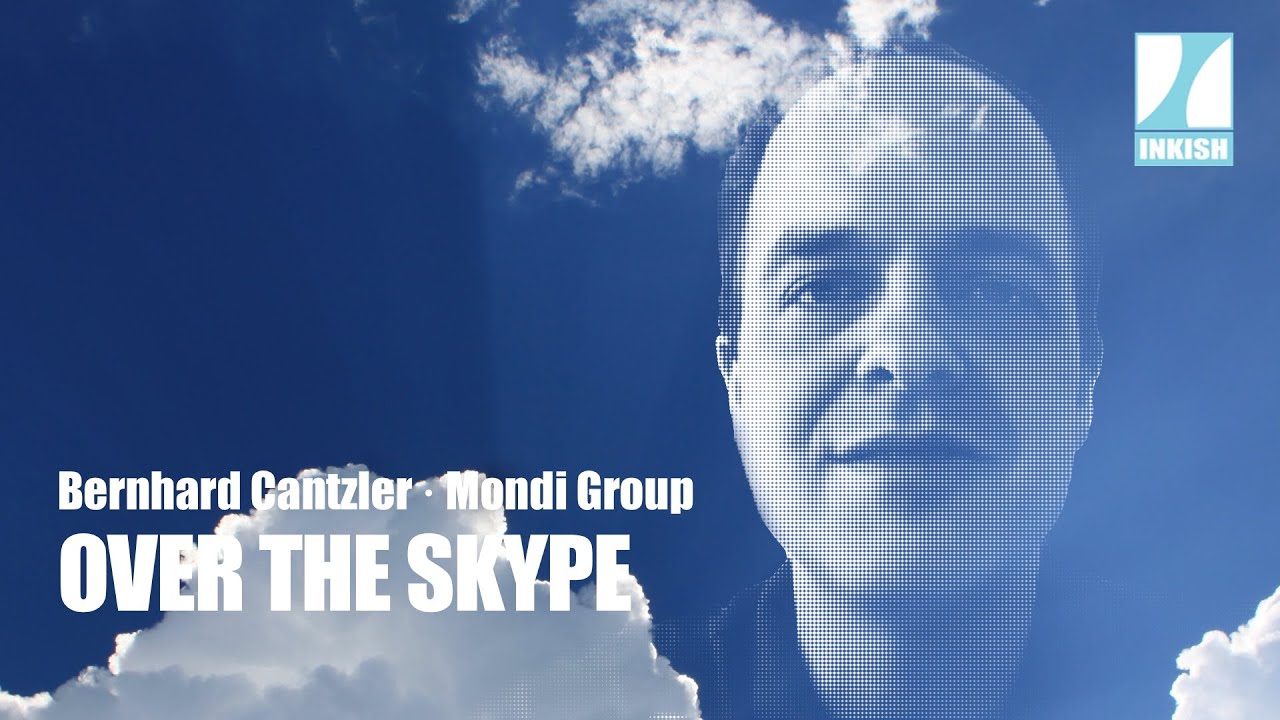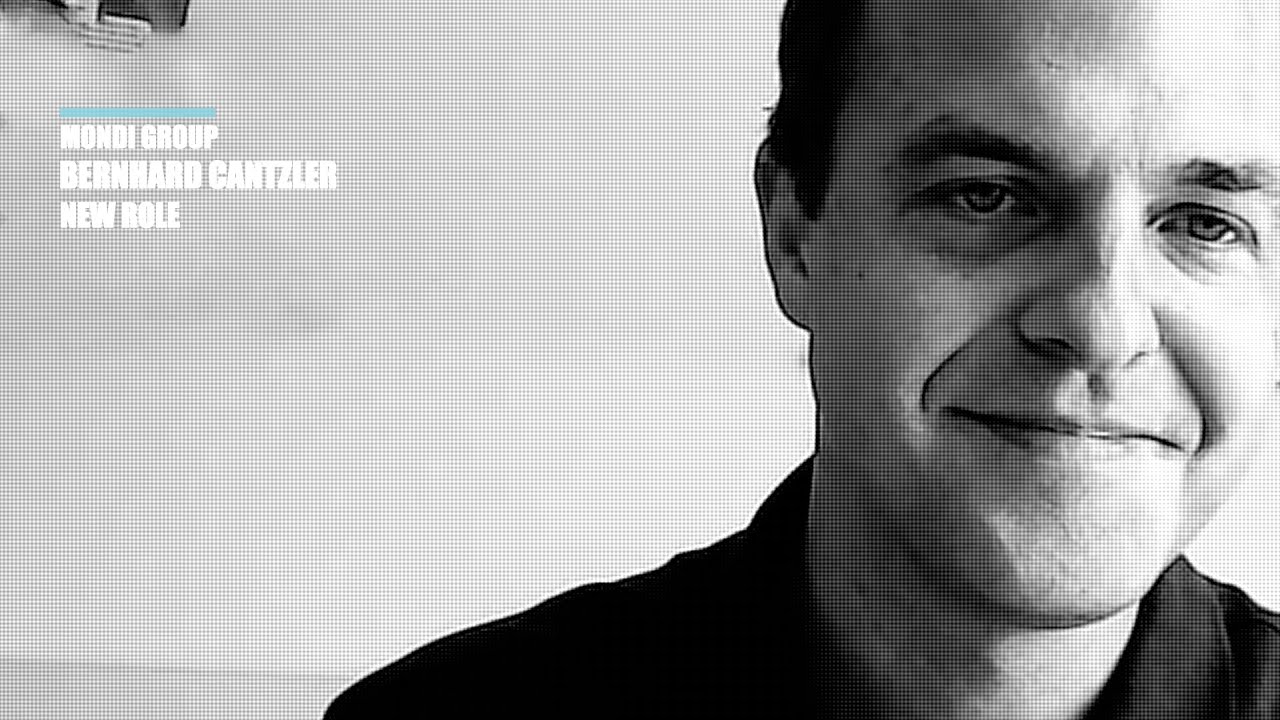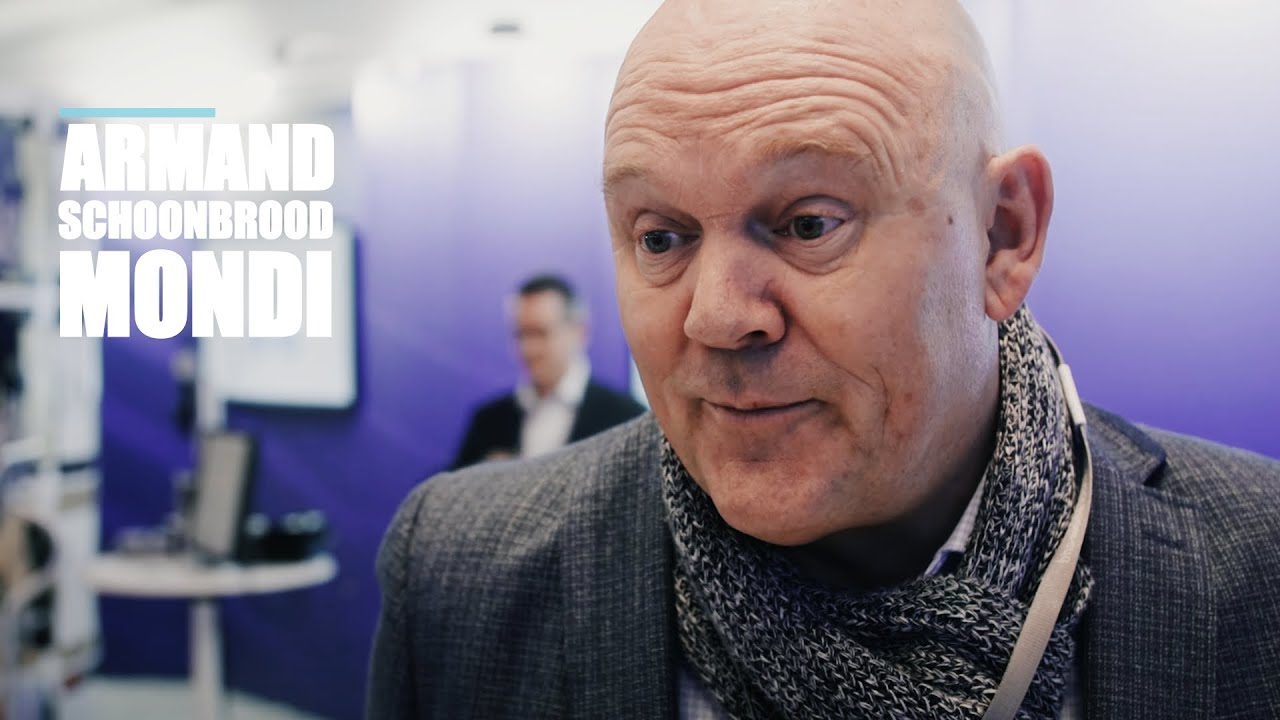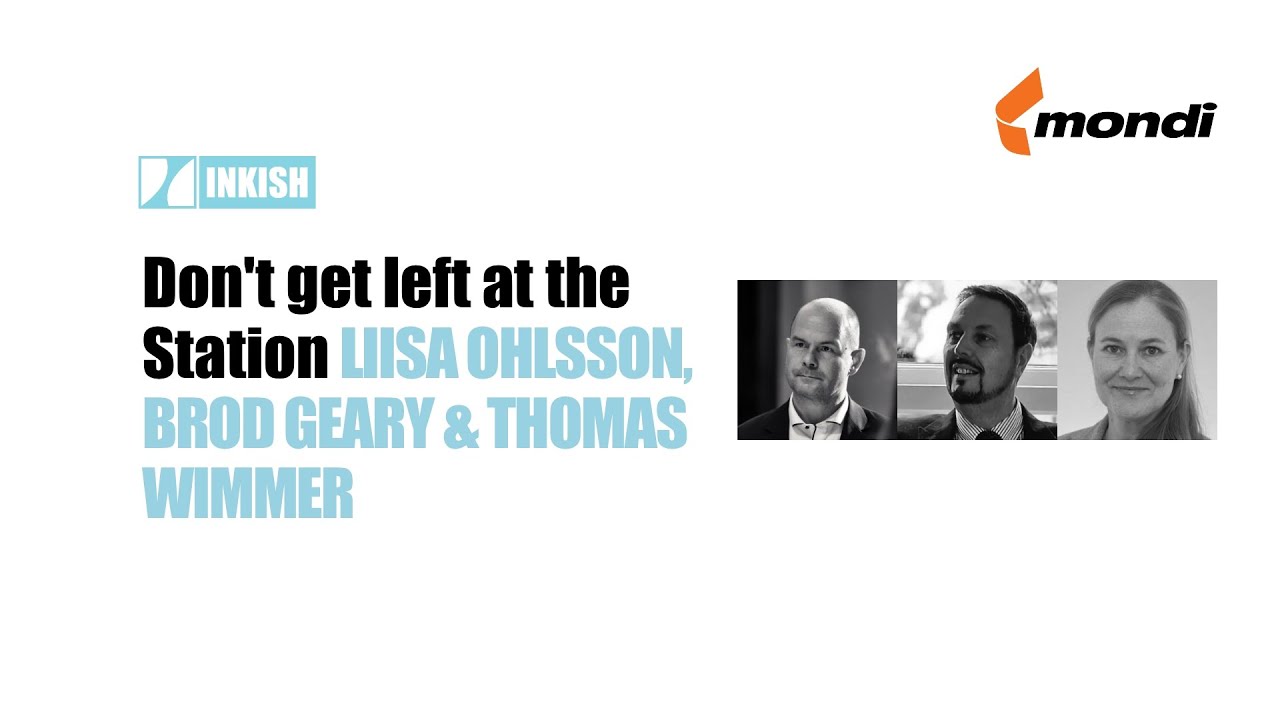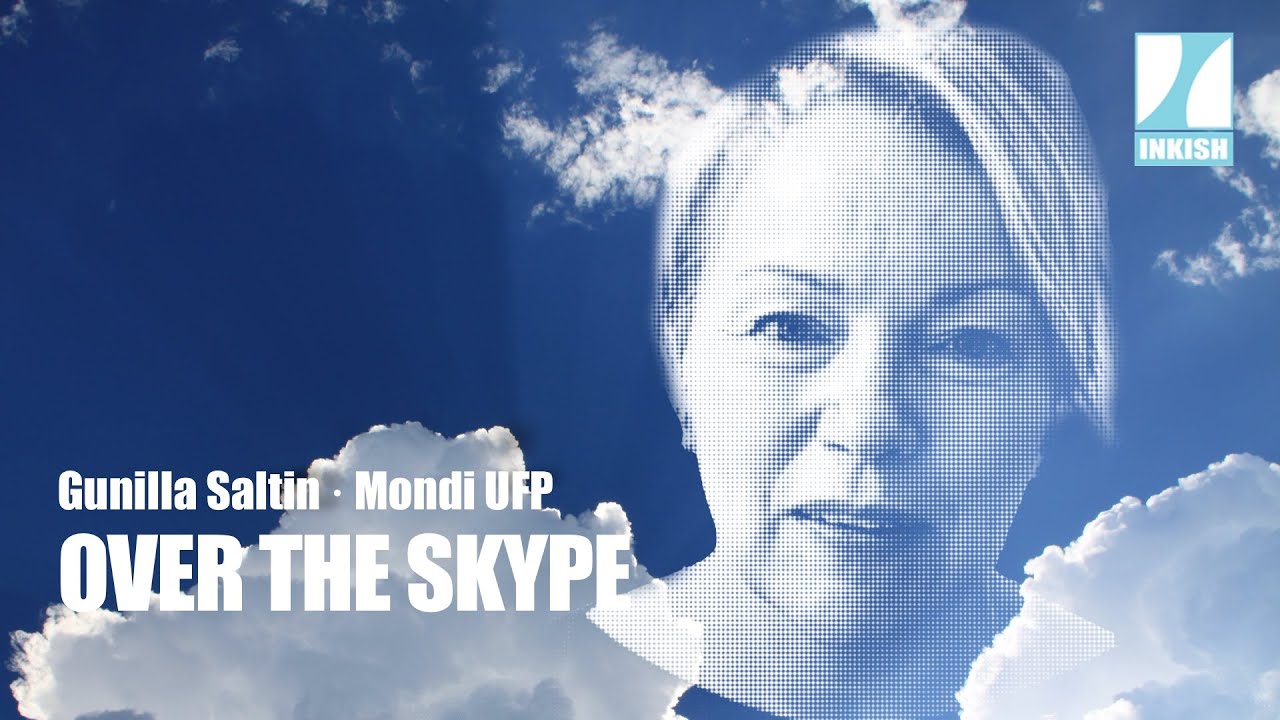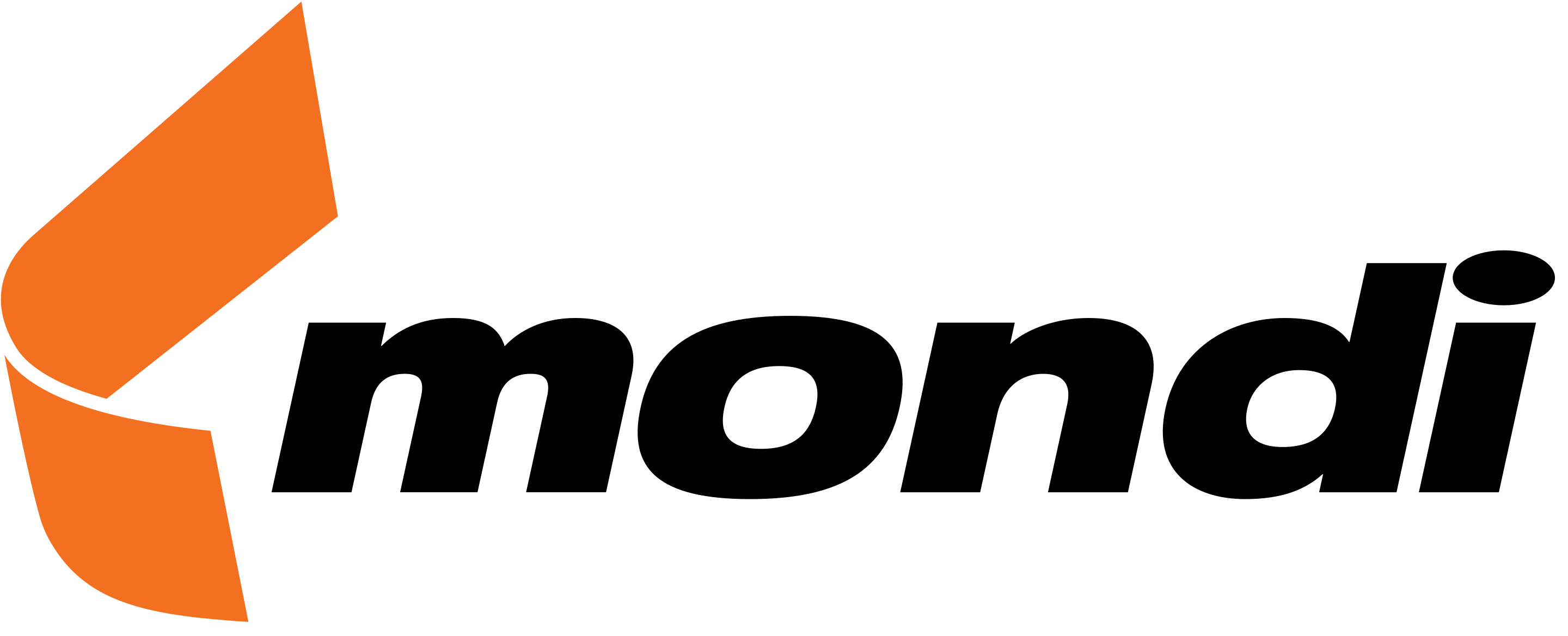Bernhard Cantzler · Over the Skype · MONDI
Over the Skype with Bernhard Cantzler, Head of Marketing & Innovation UFP, Mondi Group
Based in Vienna, Austria, Bernhard Cantzler is an excellent, internationally experienced specialist in print, packaging, marketing & communication in the digital age. During his studies he came into contact with Mondi in Russia. He had his first professional experience at Mondi with paper for digital printing, especially for inkjet productions.
Andreas Weber, CEO / Country Manager INKISH D-A-CH, was particularly interested in this over the Skype conversation:
Your tasks have expanded considerably in recent years. And especially now with COVID-19: What are you currently doing?
How does that affect the market?
What does the postponing of drupa 2020 mean for M?
How do you see digital and analog?
What influence does digitalization have on your work?
What trends do you see and what influence does or will it have on Mondi’s offer?
Note:
As with all of our “Over the Skype” interviews, the picture / sound quality is based on the available bandwidth and the respective web cams as well as the possibility to literally conduct the conversations LIVE. Despite everything, it works amazingly well and with Over the Skype we have brought together far more than 50 special personalities so far and give insights into the industry as it currently is.
Enjoy!
Over the Skype mit Bernhard Cantzler, Head of Marketing & Innovation UFP, Mondi Group
Blick nach Wien: Bernhard Cantzler ist ein exzellenter, international erfahrener Fachmann in Sachen Print, Packaging, Marketing & Kommunikation im Digitalzeitalter. Schon während des Studiums kam er in Russland mit Mondi in Kontakt. Seine ersten beruflichen Erfahrungen machte er bei Mondi mit Papier für den Digitaldruck, gerade auch für Inkjet-Produktionen.
Folgendes interessierte Andreas Weber, CEO/Country Manager INKISH D-A-CH, ganz besonders in diesem Over the Skype-Gespräch:
In den letzten Jahren haben sich ihre Aufgaben stark erweitert. Und speziell jetzt durch COVID-19: Was beschäftigt Sie derzeit?
Wie wirkt sich das auf den Markt aus?
Was bedeutet für Mondi die Verschiebung der drupa?
In welchem Verhältnis sehen Sie digital und analog?
Welchen Einfluss hat die Digitalisierung auf Ihre Arbeit?
Welche Trends sehen Sie und welchen Einfluss zeigt oder wird es zeigen auf das Angebot von Mondi?
Hinweis:
Wie bei allen unseren “Over the Skype”-Interviews richtet sich die Bild-/Ton-Qualität nach verfügbarer Bandbreite und den jeweiligen Web-Cams aus sowie der Möglichkeit, die Konversationen buchstäblich LIVE zu führen. Es funktioniert trotz allem erstaunlich gut und mit Over the Skype bringen wir bis dato weit mehr als 50 besondere Persönlichkeiten zusammen und geben Einblicke in die Branche, wie sie derzeit ist.
Viel Spaß!
Hello dear viewers, this is Andreas Weber from INKISH DACH and I have a wonderful guest from Vienna today, whom I will introduce to you in a moment. It is Bernhard Cantzler and he works for the Mondi Group and is actually an old hand in his early years. If I may say so. And an excellent expert not only when it comes to paper, but print in general, communication and marketing. And my question to you after the welcome, dear Mr. Cantzler, what brought you to Mondi? Already quite a while ago.
First of all, good morning from Vienna, Mr Weber! I am very pleased to see you again and to be able to talk to you today. Yes. How did I end up in Mondi? Originally I grew up in Russia, at least in part, and was allowed to learn a lot of Russian and passed it on to my studies. And when it came to the question of where I could work, Mondi, as a large investor in Russia with a factory in the north-east of Moscow, was a large investor who had invested in Russia from Austria, and that caught my attention and I wrote my thesis at Mondi and got to know and appreciate the company and above all the very nice colleagues there. And the good culture and atmosphere attracted my attention and gave me the opportunity to join Mondi.
That’ s very interesting. They always say you learn about the company from the bottom up. And when you describe in two or three sentences what Mondi does and what you find particularly exciting about it.
I’d love to. Mondi is a global packaging and paper company. We have more than 26 000 employees in over 30 countries.
And what I like about Mondi is what I have already mentioned. This incredibly strong internal culture, the collegiality with which we work, and above all this passion for performance. On the one hand, it’s the internal, but on the other hand it’s of course the product. I must say that when I joined, I thought paper was a piece of wood, processed, so to speak. And then I realized, however, when I got to know more about the company, what is actually behind this product paper, everything it carries, for communication purposes in particular. And I realized what variety is behind it and what range of emotions you can arouse with paper. I really enjoyed it, and I still enjoy it today, that I was able to get to know the various aspects of Mondi.
During this time, as we have known each other for well over ten years, you have already passed through a number of different stations at Mondi, and the scope of your duties has changed. And now we have a very special situation, of course because of Covid 19. So what does that mean for you? Your colleagues, the customers, the business partners?
Yeah, right. Originally I came through Mondi for distribution and digital printing. And now I’m in marketing, I’m in charge of marketing in the Fine Paper department, which is the division that makes the copy paper. The division that produces the various offset papers, especially packaging papers. And on the one hand, to put it briefly for Mondi Safety & Health, that is always a hot topic. And of course this also begins inside. Safety & Health naturally means that we have taken great care to ensure that our employees are protected. That hygiene measures are observed, that distances are kept. And of course we also focused on internal protection. For example, our own disinfectant is also produced in the laboratories to ensure that our employees are safe. At the same time, the communities in which the plants are located, also play an extremely important role for Mondi. We have a biomass plant, for example, where we also provide heating and electricity. And there we are very deeply integrated into the community and we have, for example, provided a sanatorium for the medical needs on site so that people could stay there to care for people. And so Mondi plays a very, very important role with the staff, but also in the local communities.
If I may say so, I had my first experience with Mondi, with Neusiedler. I was one of the first adaptors of Mondi Papers at the time, and when I came to this factory, I was amazed at how ultramodern and high-tech paper production actually is. And you’re right. You actually get a piece of paper in office printing, you get a piece of paper, and then
sometimes it has a stronger dramaturge, sometimes a weaker one, and it’s environmentally friendly. It’s nice. But the way it’s made is a highly complex process.
Paper production, which has become truly high-tech, is now an enormous process.
It starts with the small plant in the forest, where we also operate our own forests in South Africa or Russia, for example. And then cutting it, managing it sustainably and introducing it into the paper process is a very complex task. The mills are also huge, several kilometers in size in their outlets and of course highly automated nowadays. And we always try to do this with the most up-to-date technology possible. Also with regard to sustainability aspects and in order to always bring out the most consistent and high quality possible. So this has little to do with the, even if it’s still quite nice sometimes, but it has little to do with the hand-papering of many, many years ago. That is indeed high tech.
And Mondi, if I am not mistaken, has also expanded the range of products very much in recent years. We said that it originally came from digital printing. Those were your first career opportunities. In the meantime, the portfolio has grown much further, also in the direction of classic printing and packaging. Perhaps you can give us a brief insight into this.
Yes, I’d love to. So for us, and I think what is very, very important about paper, is that we strongly believe that paper must be a sustainable, relevant combination and of course it is in digital and analogue today. And around the paper but of course a story is typically created and told and we want to create emotions through the paper. And that is what really matters. If you listen to Günter Thomas, for example. You mentioned that very nicely the other day. That’s where a magic is unfolded, and that’s something that we see very, very strongly, that’s where the added value is created today and in the development of our papers this unfolding of magic is also very much in the foreground. And a very recent development of the portfolio, which we have just recently shown. On the market, the way to high-quality packaging, including appealing packaging, where colours, high grammages, laminated grammages are used to enable applications which then, for example, pack appealing products and make them tangible when touched, perhaps by refining them with foil. And this is a development that we have been pushing very hard in recent years, on the one hand. And on the other hand, we have of course also advanced a very strong development towards sustainability, for example, our recycling portfolio has been expanded in recent years, and not only in terms of grammage and printability. But also in terms of the various printing technologies, such as indigo, inkjet and laser. Beside the classical offset technology to really offer the whole range to our customers and to support the optimal process for the customer and to offer the same range as in the fresh phase area. Even in this sustainability area – recycling.
That sounds very exciting, but it also means that they offer the whole spectrum, so to speak, not only within printing, but commercial print or commercial printing, but also to the packaging industry. I have also learned, in lectures and paper trade events, how much they are moving forward in your perspective. That means you are also keeping yourself busy. How do print products come together? How does print position itself in the communication mix? In other words, and because my question is also about the crisis at the moment. It gives you a very good view of how the market is developing. Can you, or do you want to give us a little insight into the situation of your end customers?
Yes, that is precisely one of the central aspects of us, that we are in very close contact with our end customers, e.g. publishers, agencies or printers. And here, of course, the current crisis has left a, yes, a very big, a glimpse or even a very good impact. And in this context we have to say yes, there are many, for example, who are now in their home offices. There are many schools or universities that have been closed for at least a few days or events here in Austria. Unfortunately, the Bregenz Festspiele have been cancelled, and that of course also means a sharp drop in the number of enquiries and requests received from our printers. On the other hand, there are of course major industry events such as the trade shows, which have of course been postponed. This is usually such a natural pace-setter for innovation, for new developments in the industry, and that will not take place until next year. And in this context it is certainly very, very difficult at the moment for the majority of industry to make progress here. And in contrast to perhaps saying again, there are certain areas that are somewhat less affected. In the packaging sector in particular, we see this as a very positive development or, for example, the billing printing, which of course still takes place. There are certainly differences between the various sectors of industry, the printing industry and geography. This has a lot to do with the outbreak of Covid disease.
Maybe we need to explain one thing, because normally you always think that paper manufacturers, they have no direct contact with the end user. That’s all commercial business. But now, in the course of your work there, you have changed your position. How do you have to imagine that? How does the contact to end customers take place, which you don’t even supply directly.
Exactly, on the one hand we rely very strongly on a trading partner structure, on the other hand it is also very clear that in today’s times, thanks to digitalization and also approaches such as design thinking, it is very, very important to see products and brands from the perspective of the customer and the end user. A few years ago, we clearly realized this insight in our organization, and on the one hand, we set up a sales team that is in daily contact with publishers, agencies, and printers in order to really understand their needs and enter them into the company as quickly as possible, without of course pushing different options. And beyond that, we are very actively using digitisation. I see digitization as an opportunity. On the one hand, of course, it may have a certain impact on the use of paper. But we also rely heavily on digital technologies to make contact with our end customers. This could be via webinars, this could be newsletters. We have various social media channels that we use, and our central hub for this is actually the platform mymondi.net, where we are currently providing stories and information material or know-how for publishers, printers or advertising agencies to be in constant exchange with them in order to offer added value.
This means that the behaviour of a manufacturer has completely changed compared to the past? I can remember 15, 20, 25 years ago. The most important thing was always the sampling. And these sample folders went out to retailers. They passed them on. And now all of a sudden a very, very personal and direct line is established. That’s exciting, of course, because I know the subject through many printers who have the problem. Well, the customer has to hold the product in his hands to experience all the goodness of paper, the feel, the smell, whatever I know personally. How do you manage to do that or what is the response when you have to transport it via on-screen media?
Yes, we see it as one and, so to speak, that it interlocks, digitally and analogically.
We also like to call it a digilog approach. And on the one hand, digital media nowadays can help very well to share inspiration and exchange. We always see this, for example, on our Instagram channel, where you can network quickly, where you can create networks spontaneously using hashtags and thus discover new trends and also get the chance to help shape them. And may also join the conversation. And at the same time, the digital channel of course also offers the possibility of making the product available to interested customers, sending it to them and, especially then, through events, but also through the team I just mentioned, which is out there on the market, 90 percent of the time to discuss it personally. To experience. To understand these emotions that the customer needs to be able to give him a good recommendation as to which paper to choose. This interweaving of digital and analogue and this personal element at the end is a very, very important aspect. It’s not enough just to appeal to the digital mind, but also the analogue heart behind it. And our customers appreciate this very much. In any case, paper is still a business that lives from personal language to language and personal entertainment.
That sounds to me like one of those, as they say, 360-degree approaches that you take. And I find that very exciting, because I can imagine that Instagram does not have that, because it does not have the typical clientele that you usually reach. Instead, these are younger people, mainly from the creative sector and probably, of course, the digitally oriented. And maybe they don’t know anything else from the past. And that leads to the fact that they will actually then, that they will be inspired and then enter into dialogue with you.
Absolutely. And the nice thing is, we find a very high openness in this communication with each other and also a very high interest in each other. And that’s also how wonderful projects are created together. Now, just outside of the crisis, we have for example shared on our Instagram channel together with our colleagues from Supercolor. They’ve got an activity going on. Designers from all over the world can send them pictures. These pictures are then printed on their risography machine, using our paper, among other things PERGRAPHICA. The designs are then sold by graphic artists and these designs are then sold and used by Doctors without Borders to support projects here in Greece. And this is what happened purely via digital channels on the one hand, and on the other hand, in the background we have of course also created the personal contacts and thus created a beautiful network product, both digital and analogue. And all this spontaneously within a few days in a Covid crisis.
I think that’s really, really fantastic, and that’s how this social component in social media really comes to bloom and develop. What? You’ve mentioned PERGRAPHICA, a relatively new premium paper. And you have also taken a different approach by working with top people to create first-class products, such as the wonderful Vienna Book, which I had the pleasure of discussing last year. And this is also a point where you say: Here the experience with what is feasible becomes very clear. Right?
Exactly, this is also always our goal in dialogue with the relevant experts and with the ones in dialogue, but also with the creative people. The possibilities of sounding out and redefining the possibilities between paper, print, communication, emotion – perhaps, if we succeed from time to time and show how these emotions can also be used in a meaningful way. I think that is a very important aspect. That it’s not just a question of effect hashing, but that the paper, the refinement, the print, the message are used in such a way that everything is precisely coordinated. And then a multi-sensory message is conveyed, telling your own story that speaks to you. And that’s the beauty, I think. And in this context, we have developed Vienna Stories, where a film director presents his locations in Vienna personally, so to speak, together with other artists with whom he works, and where various aspects of paper are illuminated and embedded in this script story by the director.
So the entire book. For those who don’t know it, it’s actually structured like a storyboard for a film. It’s not just book chapters, these are actually storyboard elements with great effects. But you have also discovered one thing about you and your colleagues. It’s the good combination of paper and delicious food and cooking and the whole experience around it. How did you come up with it? And can you give us one or two examples?
Food and paper, that’s something that goes together very well. That’s what we have experienced over the last few months, and we have various different books here, including those that use our paper to present food, so to speak. What is the difficult thing? The challenging thing? From a purely technological point of view, of course, food is aesthetically pleasing and challenging to reproduce when it’s printed, so that it tastes pictorial, so to speak. It is a great art to find the right colour tones. The human eye is very sensitive to this when eating. This is purely technical, of course. But the exciting thing is that eating is not only something we do naturally, but eating is also something that awakens many, many emotions. And we have just produced a book with the Brandstätter Verlag that was written by authors who have highlighted this aspect of emotion very beautifully, Karma Food so to speak. A book about the food from India and how it reflects on our minds. And in this context the book was presented. It is printed on our PERGRAPHICA Classic Smooth, very appealing, even provoked by this. But the authors have really presented this Feelgood aspect of eating or Karma Foods. And that has become a complete package here, I must say. And this extreme emotion and eating has led to further events, which we have now used in the Covid crisis to promote the topic.
Now you associate a good cookbook with wonderful food, and you always associate coated papers with it. And now you have uncoated fine paper on your flag. And isn’t that a contradiction in itself?
Yes. Our papers are coated, of course. But where the big advantage of uncoated paper comes out is that it doesn’t have this glossy surface, but when I touch an uncoated paper, I actually touch the wood fibre. Wood is of course the origins of the paper and the naturalness of the paper. And that has the tremendous advantage that when I go through the book, it gives me the feeling, to hold a piece of nature in my hand somehow. And Karma Food or for example last year we had a book about barbecues. This food also lives through the nature aspect of eating. I believe that we can combine this with the fact that, on the one hand, we have good natural food and, on the other hand, we have good, natural wood products and paper in our hands. That connects these different aspects very well and spans the bow. Why in such a case uncoated paper can be a very good choice.
Now, you mentioned Günter Thomas earlier, and you delivered a benchmark test, where he tried it out with you as a special effect printer and a really top ten premium printer, who only ever used coated surfaces. What about graphic designers? What is possible on uncoated paper? How did the results come about and what do they represent?
Yes, it was a very, very exciting project that we started developing with Günter Thomas last year. Günther Thomas is of course a very important partner for us in many respects. First, he is a master in telling stories and evoking emotions. And purely because of that, it was of course very exciting for us to work with him. On the other hand, he is of course also an expert when it comes to bringing packaging products to the market. And then we went on this journey together. How can we create uncoated products that can be used in the packaging sector? And these are, among other things, white, but also dark, coloured, black products that have this uncoated character and do not have the typical strychnine character that is found in many high-quality packaging. That was the novelty value of the development, so to speak. That appealed to us all. The team from GT-Trendhaus 42 and MondiAnd here we conducted a very intense test together last year to thoroughly test our products on the one hand. Because packaging is of course a very challenging area. Typically, we are dealing with premium brands, and everything has to fit and fit very precisely. And on the other hand it is of course important that even after processing, with the processing accordingly, these emotions that we wanted to evoke can be evoked. And that’s where we drew heavily on the experience of GT. And now we have also launched the product and have already brought the first beautiful examples onto the market, where we are using uncoated packaging of high quality.
And the special thing about Günter Thomas is that he does not only print in CUVK or toner mode, but the paper is deformed. He uses hot foils, metal inks, all sorts of things, and was he a bit worried about whether that could work?
He challenged us quite a bit too. I have to admit, but that was good. We really appreciated it. We had a very open dialogue. We wanted to make a good product, and the GT Trendhaus team, I think, worked on the paper with over 10 different processing technologies. We also did RGB printing. We printed white on it. So, as you said, we challenged in different ways. And yes, at the beginning, which is part of every innovation, there is of course a certain risk involved. And we were lucky that we were able to produce a very beautiful and really outstanding product together. That we still use today to present our product to customers and above all to inspire them with it, because to see this variety of processing and finishing technologies on a sheet of paper. Few people have that, it has to be said. And it is also a beautiful, beautiful tool to have on hand.
And that fits in well with the general motto. I took another look at it. How does Mondi perform over the web or on LinkedIn? They say that one is “Grow”, which means growth, “Create” which means creative work and also “Inspire”. And then “Together” is added as a linker. And I think you can tell that very well from the kind of things you describe to us. And of course, this should also find an incredible response internally with you. When you suddenly take a risk and enter spheres in a way that you could never have imagined.
That is exactly what is beautiful about it, however, and perhaps it picks up the beginning again a little bit. In Mondi, the aspect of entrepreneurship is lived very strongly. Everyone in the company is given the opportunity to develop their own business sense and to take risks. And everyone is also encouraged to take such steps. And of course this makes it incredibly exciting for each individual to develop ideas here. Also to take certain risks. And sometimes things may not go so well. But most of the time I have to say that something really great comes out of it. And this “Together” internally, and also with external partners like GT or certain printing or trading partners. This is then something that is very often simply the key to success, and that is supported by the company. And there you can also realize your own ideas a little bit.
That is quite wonderful and really finds my full admiration. Because my impression is that normally this spirit of experimentation in the industry has receded somewhat. People rely on standards, and these standards of course also dictate that many people are more likely to be in the commodity sector and then enter the price wars as printers. And that’s a completely different path they can take. And this is not reserved for just a few. And that brings me to my last point. Because we have now quite well the status quo. We have discussed what is special about you, about Mondi, about your colleagues, about your customers, about your trading partners. And right now we have a very miserable situation. And what does that mean? And what does that mean above all in terms of the future? What do you see coming, or rather, what are your thoughts on supporting the markets accordingly and perhaps giving them a boost?
I believe that the aspect that we need to have a relevant and sustainable and digital analog based communication around the paper and with the paper to talk about love on paper. That this will continue to be very, very relevant. And what we haven’t quite addressed today is of course still the sustainability aspect. I think the issue of sustainability was very, very important before the crisis and after the crisis. It will also be very, very important after the crisis. And driving these two aspects forward will also be the linchpin for us before and after the crisis. I don’t think much will actually change in this context. I think it is very, very important to work with good partners who see things in the same way and support them, and to develop things together in the form of many good networks. This will be a success factor for the future as well. And if we as an industry manage to generate these stories and emotions, then I do believe, because of the current digital oversaturation and perhaps also because of the crisis, that there is also a certain opportunity, here in the crisis for us as an industry. Because I assume that a lot of people, perhaps even a little bit, are eager to have something in their hands again that appeals to them, that is relevant to them, that simply appeals to them directly and also draws them into a story.
I think that is something that can also come out of this crisis in a very positive way for us.
I’d like to agree with that. And that is also my observation. And I believe that this very heated discussion about climate sins, which we had before the Covid crisis, is not out of date and will return. And if you say, if it is like you say, that you use digital platforms like Instagram and Facebook, but also others, of course, to specifically address people from the digital sphere, and now, in these quiet times, in these quotes, where you can act more calmly, to familiarize yourself with the subject of paper, then that can only be a good thing for everyone. Looking at the clock, Mr Cantzler, I realize that we have almost reached our limit. Not that I want to push you and then you say: I was just about to say that. But I found it to be a stimulating conversation, and I think this can be the prelude to even more common ground. Because markets are conversations, and good conversations inspire markets. And thank you very much for your time. And stay with us, and may I thank you very much. And if you wish, if you have anything else to say, say it, but otherwise I will give you the last say at this point, so to speak.
I would simply like to thank you very much. We have been in conversation for almost a decade over the last few years, and I always have the feeling that we are at the pulse of time together. And especially in these times it is important to continue these conversations. And I’m already looking forward to future conversions in this area, so that we can move forward together with confidence and position print and paper sustainably.
Thank you very much again and dear INKISH community. I hope we could inspire you with this, for me, very exciting conversation, even though we have known each other for a long time, there is always something new. And stay with us, and together we can do everything we want to do. So have a good time and once again best regards to Vienna.
Best regards from Vienna.
Bye.






















































